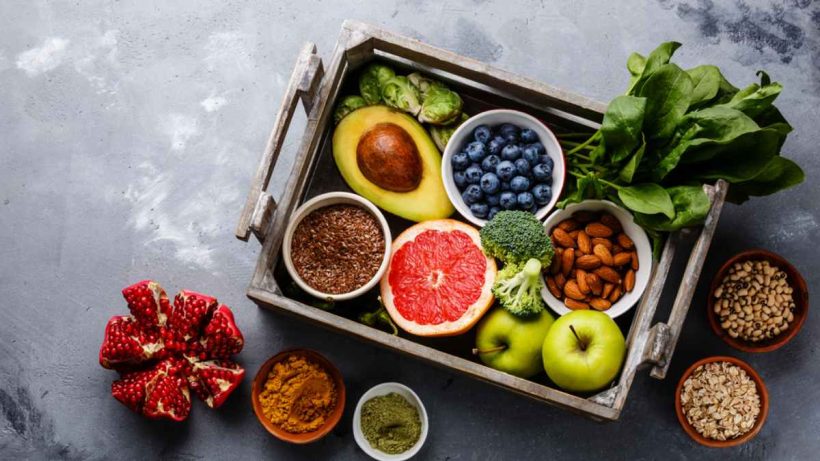You’ve probably heard that eating enough vegetables is vital to a healthy lifestyle. However, this mainstream advice doesn’t always come with helpful guidance on how to increase your veggie consumption. As a result, you could be missing opportunities to make your meals more nutritious and delicious.
Getting the recommended amount of vegetables comes with numerous benefits, including disease prevention, weight management, and improved digestive health. Fortunately, there are many simple ways to incorporate more vegetables into your diet to take advantage of these benefits. Here are five ways to increase your daily vegetable intake.
1. Drink Your Veggies
Drinking your vegetables is a convenient option for meeting your nutritional needs. Smoothies are among the most popular and tasty options in this category. Some of the best veggies to add to fruit-based smoothies include frozen cauliflower, carrots, and leafy greens. The mild taste of spinach makes throwing a handful into your smoothie a no-brainer. Kale, chard, and collard greens are other green options you can add to the mix.
You can also meet your veggie goals by adding supplements to your favorite drinks. A scoop of a super greens powder is versatile enough to go with a glass of water or mix into a smoothie. Adding a scoop is especially helpful on busy days when it’s harder to get all your nutrients through regular meals alone.
2. Plan Meals and Track Habits
Planning your meals and tracking your eating habits are excellent ways to set yourself up for success. Sit down with a weekly meal planner and map out what vegetables you can incorporate. Choose main dish recipes with veggies as the primary ingredients or add them as a tasty side dish. Look for opportunities to batch cook your vegetable-based meals, as with stews, soups, and stir-fries. You could also wash, cut, and store your veggies in advance for easy access during meal time.
Be intentional with grocery shopping by making a list and sticking to it. If you don’t find everything you need in the produce aisle, hit up the frozen food section or canned goods. Frozen and canned vegetables still come packed with nutrients and have the added benefit of longer shelf life. After you’ve finished your meal, input the information into a habit tracker. Your tracker could be a physical notebook or a smartphone app specifically designed to keep up with your eating habits.
3. Go for the Snack-Sized Option
Snack time is the perfect opportunity to incorporate more vegetables into your diet. Carrots, celery, cucumbers, cherry tomatoes, and cauliflower are all easy options to take on the go and snack on between meals. These veggies are great paired with hummus, guacamole, or another healthy dip. Buy pre-cut products at the store or chop up veggies yourself to save for later.
Fiber-rich snacks like vegetables also allow you to stay fuller for longer, helping you avoid overeating. Processed snack foods are usually calorie-dense and contain high amounts of sugar, sodium, and artificial additives. In contrast, vegetables are packed with essential minerals, vitamins, and dietary fiber, making them the perfect snack.
4. Try New Recipes and Rethink Old Favorites
If you’re not already getting the recommended amount of vegetables, it’s time to add more nutrient-rich dishes to your cooking routine. Veggie-based options like soup, stir-fries, or salad are big opportunities to hit your daily vegetable intake goal. You could also experiment with different cooking techniques and seasonings to make your veggies more flavorful. Find opportunities to throw in extra vegetables when you can, like adding spinach to your omelet or additional toppings to sandwiches.
You could also reimagine how you prepare familiar favorites. Switching out regular pizza crust for a cauliflower crust provides a healthier option packed with veggie goodness. You can mix up your pasta game with zucchini lasagna or butternut squash noodles instead of regular spaghetti. Cauliflower rice is another healthy substitute for your grains. In addition, eating a plant-based burger is a great way to meet your nutritional goals and consume less red meat.
5. Grow Your Own Garden
Growing your food fosters a sense of achievement and will make you want to enjoy the hard fruits (and vegetables) of your labor. Veggies that ripen in your garden are generally more nutritious than grocery-store products harvested early. In addition, the food you grow yourself is almost always tastier and, provided you use organic growing techniques, pesticide-free. If you’re new to gardening, you could start with a container garden and work up to a raised bed setup.
Some of the easiest vegetables for beginners to grow include green beans, tomatoes, radishes, lettuce, cucumbers, carrots, and zucchini. Once you’ve gotten into your gardening groove, you can go for harder-to-grow vegetables like potatoes, celery, and cauliflower. You will need to pay attention to the best times to plant your crops based on your local climate. Most plantings will occur in springtime, but it all depends on the vegetable.
Time to Veg Out
To truly live a healthy lifestyle, you need to consume the recommended daily amount of vegetables. While eating enough veggies is important, it isn’t always easy. Processed foods fill the grocery aisles, and hitting a drive-through for a quick meal is all too easy. You will need to be intentional to meet your dietary goals and get the nutrients your body craves.
Consistency is also critical when incorporating more veggies into your diet. A habit tracker can help hold you accountable and ensure you hit your targets at mealtime. Eventually, your healthy eating habits will stick and become second nature to you. Your body will thank you for making a point to eat more veggies.
Laila Azzahra is a professional writer and blogger that loves to write about technology, business, entertainment, science, and health.
